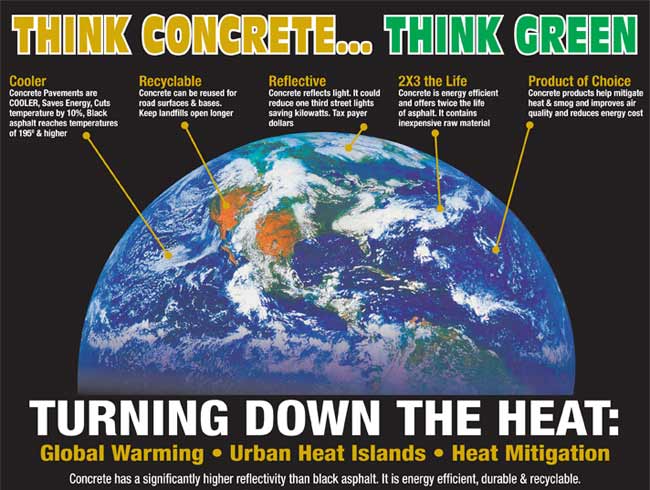Why Use Concrete Construction?

The Look
The genuine, solid look of concrete provides a real, strong, durable building with a range of interior and exterior finishes. Whether it is used in expensive housing, country homesteads or in small, compact contemporary town houses, the look is always superior to those who try to imitate the solidness of concrete. Deep window and door reveals, the concrete feel, solid thick walls are some of the features of the good look of concrete structures.
Durability
Concrete will not rot, rust or corrode. It has resistance to wear, has excellent strength and will last for a long, long time. Concrete exterior walls will need minimal maintenance for its long life duration.
Safe
Concrete is completely fire resistant. It is an excellent sound-absorbing material. Concrete structures have extensive wind and earthquake resistance and will survive very high horizontal forces.
Learn more about your safety from hurricanes and tornadoes in a concrete block home reinforced with steel. Building codes in Florida are tough when it comes to hurricanes. Read an article about “Homes built with concrete block exterior walls”. Click here.
Energy Efficient Comfort
Concrete, as a heavy material has thermal mass property – the ability to absorb, store and slowly release heat. The result of this ability is to moderate temperature extremes. Thermal mass ensures that inside is not affected by extreme outside temperature fluctuations. This reduces energy costs and makes for very comfortable living.
a) Warm in winter – When the outside temperature is cold, heat from the sun (or in room heater) are stored in high mass floors, walls and ceilings, which is gradually released for a long time after the source of the energy is gone.
b) Cool in summer – As the outside temperature increases, the mass of concrete slowly absorbs the energy into the mass of the building and, after sunset, the stored heat is slowly released.
Health
Solid concrete structures provide a low humidity environment, ideal for reducing incidences of asthma. It reduces dust mites and is totally pest proof – the solid concrete structure cannot be attacked by vermin or insects and provides no cavities for them to hide in.
Quite Environment
Solid concrete houses offer a high soundproof barrier, giving a quite, comfortable indoor environment. No squeaky floor boards or the creaks and groans experienced with less stable materials. This means less outside noise and less noise from other rooms within the house.
Environmentally Friendly
Concrete is made of natural and/or recycled materials. No timber used, therefore our natural forest resources are conserved.
Why use stamped concrete for driveways?
Concrete is basically a maintenance free building material. A stamped concrete driveway, for example, is likely to last 30 years or longer without any major maintenance. Any material requiring mortar joints has a tendency to settle and come apart. Once this happens weeds can grow up requiring constant maintenance. Another negative is once settled, the units can buck. This uneven surface could cause a tripping hazard, Asphalt neither has the life expectancy or the decorative options of concrete. Its spongy like characteristic requires frequent patching and resurfacing. Concrete is truly the way to go if you want quality, low maintenance and reliability
Why use concrete for commercial parking lots?
When comparing the costs of concrete vs. asphalt pavement the discussion often stops at initial installation cost. This puts concrete ar what seems an immediate disadvantage.
However, compare those costs with designs that carry equal load capacities–then add on the continued repair and replacement costs for the service life of both pavements and the realization becomes quite simple and clear.
Following the initial placement of a quality concrete parking area, the maintenance of the pavement over its longer life span is mostly a matter of cleaning and restriping. A comparable asphalt parking lot requires multiple overlays and seal coats and often requires repair and maintenance of potholes or other deformities caused by the pavement’s inability to handle inadvertent overloads and the relentless attack by other petroleum-based products.
